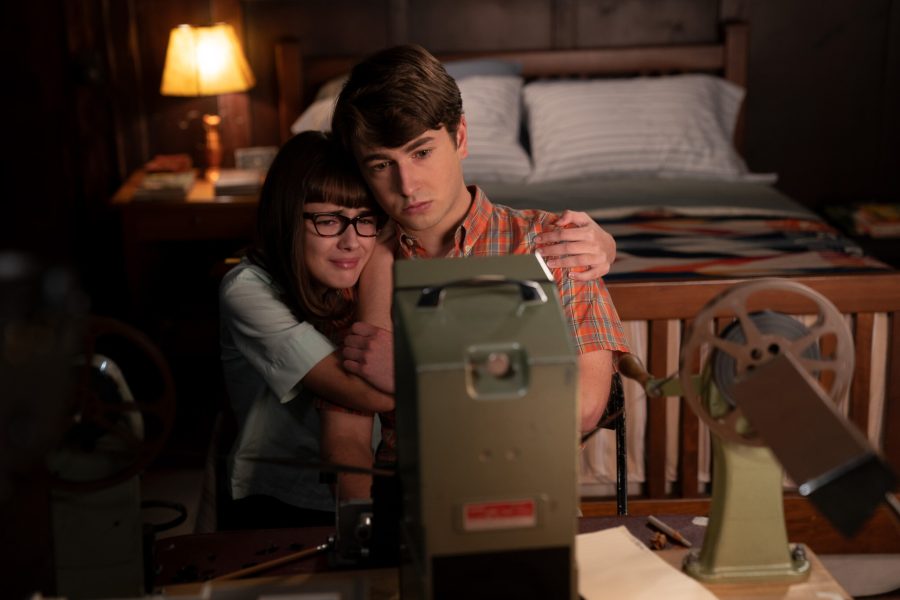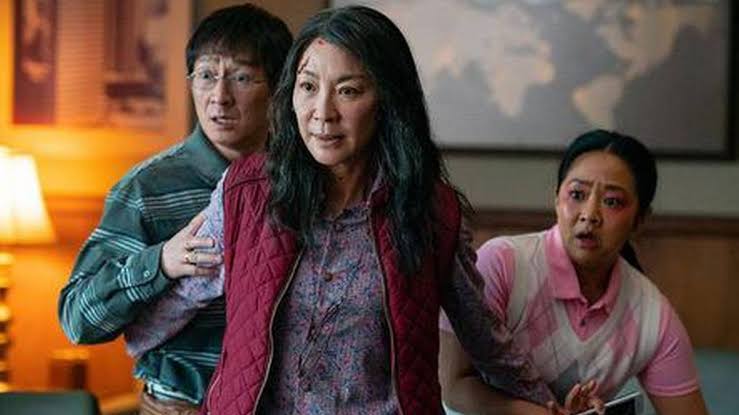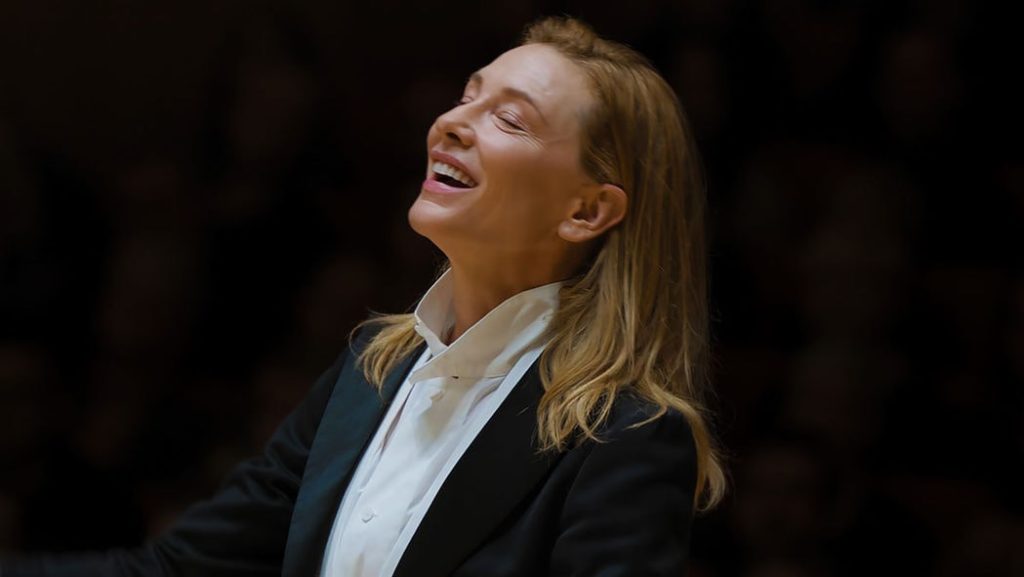
Oscars 2023 and art of empathy: How trauma films foster understanding, connection
Trauma is a common thread that runs through most films nominated for the 2023 Academy Awards. What makes sadness as a filmmaking device effective?

In Steven Spielberg’s The Fabelmans, an otherwise reasonable teenager’s first reaction to his parents’ divorce is pulling out a camera and making a movie; his sister weeping and his mother’s hair standing on end, and his father turned to pale marble. He sees this happen; he imagines shooting it, composing the emotional beats, framing scenes. Then he wakes up: his parents have cleaved into two people. He clutches onto the camera like a man drowning in quicksand. This man, Spielberg says, is Spielberg himself.
Trauma looms larger than ever in this year’s frontrunners for the Best Picture Oscar. There is ample variety in the stories, yet what is unmissable is that, after the pandemic’s historic toll on our lives, filmmakers have begun to wrestle more actively with the repressed and the unaddressed in the filigree-like constitution of our days.
Spielberg, that fantastic fabulist of dinosaurs and aliens and gunslingers, has often been criticised for ditching the whimsical, for movies with determined gravitas and meaning. Consider the rip-roaring year of 1993, when Spielberg released Jurassic Park, a fairy-tale about the follies of feckless over-ambition, along with Schindler’s List, that great three-hour near-documentary of evil walking and drinking in ironed uniforms. So, when he shoots The Fabelmans, self-admittedly his most emotional film yet, he purges himself of another crippling sadness: the divorce, the centrepiece of the movie of his life.
Also read: ‘Everything Everywhere All At Once’ review: A migrant story with a human soul
Salient to the rejection of Spielberg’s brand of filmmaking is the concern that his coterie of filmmakers dabbles in the fanciful and silly — a boy paddling his pushbike to the moon? — and are fundamentally incapable of capturing more human complexities. Their cinematic vocabulary of sweeping ballroom shots and granular details of lunar craters does not equip them to talk about the valley of gumption that a character travels in two words (a muted “Good job!”, for instance, the final line of dialogue in Damien Chazelle’s sweaty-as-a-hog 2014 psychological drama Whiplash).
Sadness as a filmmaking device
The Steven Spielbergs and George Lucases and Peter Jacksons are mocked for their maudlin stabs at creating genuine feeling: easy smiles, overwhelming background scores, and a general absence of a deeper emotion. This is where the device of trauma, and its criticism, shines brightest.
It is the buzzword of the decade, embodying all sorts of sultry imperfections of the human condition. It can be microscopic, justifying abrupt personal violence, and it can sweep larger, telling us intergenerational stories of depression.
By situating a grievous event in the past and lensing the story’s characters in its shadow, the filmmaker can easily create a paint-by-numbers account of emotional depth, ridding himself of the need to flesh out his characters. They are enrobed, mummified even, in the palliative bandage of the past, and all events that ensue can find their genesis at one end of this rope.
This is a grossly unfair characterization. A considered study of this year’s nominees retaliates against this simplism, and, thanks to their variety, expands our sympathy to the more people-facing uses of sadness as a filmmaking device.

A reminder of the ultimate end
Laureled with gusto and the frontrunner this year, Everything Everywhere All At Once evokes a profound melancholy in its positively drug-addled medley. The film is a gaudy, heady, foray into the impact of our daily choices, and argues that every opportunity missed — or leap of faith taken — realigns our life in monumental ways. The central conflict is between a mother and her complicated daughter, which snowballs into cosmic violence when the immigrant mother’s overbearing tenor pushes the daughter off her knocker, so to speak. At the focal point of this unexplainable movie — it has its own ten-feet-tall rulebook for all we know — is how our faith in the transformative potential of our choices can erase intergenerational pain.
Also read: Deepika, 3 nominations, a live show: Catch India at Oscars 2023 on Monday
Pricking old wounds is counterproductive to happiness, which hinges upon a conscious erasure of our guilt. If we believe our choices make no difference, we end up arming the world with infinite control of our joy. Instead, we need to realize that dwelling too much on our possibly bad choices will, in a recursive prophecy, result in even more bad choices. We must, then, break out of this vicious cycle.
Staring in the face of our guilt and rejecting its all-consuming weight over us is key, we learn, to making amends. Trauma here serves the function of a memento mori painting, which doesn’t actually bode of grief, but reminds us of the inevitable, the done-and-dusted idea of death. It reminds us not of our helplessness, or the meaninglessness of our choices, but actually heightens our autonomy by explicitly flagging the tail-end, providing a tangible, enormous room to experiment with our choices.
Wounds from war, and grief and shame
All Quiet on The Western Front, a German-language film about the inconsequence of war, must necessarily involve the notion of trauma. It is not just the appendage of the film’s message, it is the film itself — head, torso, and all. Wounds from war — the almost-classical case of post-traumatic-stress-disorders — shall make that clear. Allegations of the formulaic application of trauma here are redundant, as an honest account of war cannot help but paint out its echoing emptiness, sharpened by the hands of dead soldiers clawing their way out of a bloody heap.

Tár picks us up from the muddy patches of land and the universe’s yawning ruin, to gilded rooms full of coffee, glee and hubris. Trauma does not have to consume the plot of a film to make itself felt — in this tale of a music conductor gone rogue, the feeling emerges from very direct actions and reactions: a touch too hard, a heel too sharp, an ego too unearthly. Can the genuine concerns of sexual abuse be allowed to chip away the glory of a celebrated musician? The author-work debate plays out vocally, in fits and fisticuffs, and the impact of remembered trauma on our own life is made abundantly clear. What the impeccably disturbing film drives home is that grief and shame, and resentment, are very real emotions that cannot be snubbed from the palimpsest of our lives. If nothing else, it portrays the concept as an actual, unmistakable force that does have material ramifications.
Lived reality and seeds of discord
Another reaction to trauma could be to not even address it but reject its very existence. The same is a lived reality, in the post-MeToo era, of complaints of sexual misconduct. In Women Talking, the conflict of internalised misogyny — complacence in silence — is pitted against that of active resistance against a hypermasculine, and consequently violent and inhumanly exploitative, community. The microcosm of a closed society and the inescapable fate of its women throw in sharp contrast the facets of the real world, diminishing the fine lines between dystopia and actuality. It spills out onto the margins of our newspapers where high-seated professionals deny the pain and shock of rape survivors, and the film ricochets gender dynamics against the glass ceiling of artificial, but culturally enforced, limitations on women’s potential.
When it comes to playing with sadness like silly putty, look no further than Martin McDonagh, the Irish-British director of depressing comedies, at times confusing us regarding the mirthful or bereaved nature of our tears. In his The Banshees of Inisherin, a zany drunken story of a film, a best friend calls it quits. When the other guy tries to get back together, the deserter threatens him by cutting off his own fingers. Some days later, if you stood outside a small shack in fictional Ireland, you would see a finger, a solitary, bloody finger, flying like an eagle, smacking against a wooden door with the sound of greasy chicken against a windscreen. One laughs.

What this hearkens back to is the cannonballs that are shown flying in the distance, from men to kindred men, who have been bitten by a bug of infighting in the opening passions of the Irish Civil War in 1923. The jolly friend (with intact fingers) attempts to reclaim his friendship with impassioned addresses of niceness, of being interesting, of friendly loyalty going back years. He cries like a man whose mother told him she never loved him. Yet, when one of the fingers from the unsociable friend chokes and kills the other friend’s pet donkey, he turns over a new leaf and sets fire to the snob’s house. The commentary about the meaningless violence between two formerly inseparable friends is a stand-in for the internal strife between the Irish soldiers in the aftermath of the War’s more divisive developments. The severance of the fingers is irreversible, akin to the seeds of discord sown between Ireland’s own soldiers due to differences about their shared future.
Also read: After Gangnam, desi Naatu Naatu became global sensation; what explains it?
What we see here is not the upshot of trauma, but its creation in active time: the fingers are not something the man will ever forget, and the loss of the donkey, a symbol of the other friend’s own anchor to the world, is similarly gut-wrenching. Yet, there is no malice — both of them are, on their own grounds, perfectly logical — and thus there need not be an unavoidably evil reason to why things become traumatic — it is in the very chaos of our instant desires that a fissure rips open and our humanity falls out.
Trauma, if you are not tired of the word already, is then a pensive attempt at positing our own place in the world. Given the very real challenges facing the human race — the ever-expanding mess of commercialization, the trees burning like funeral pyres, our prejudices against flesh and faith — to not be sad and meditative is unnatural. If it lends greater depth to an ensemble in a film, it must surely be a potent force. When it explains so much about the state of our world, rejecting it as “the easy way out” is grievously wrong. Sadness is as effective a device as happiness — and both deserve representation for their synergy to enrich our cultural milieu.


